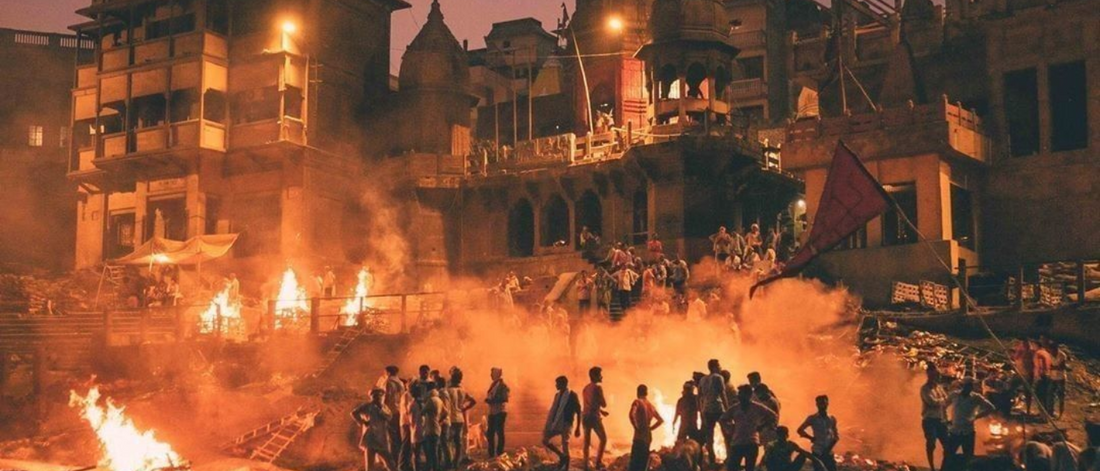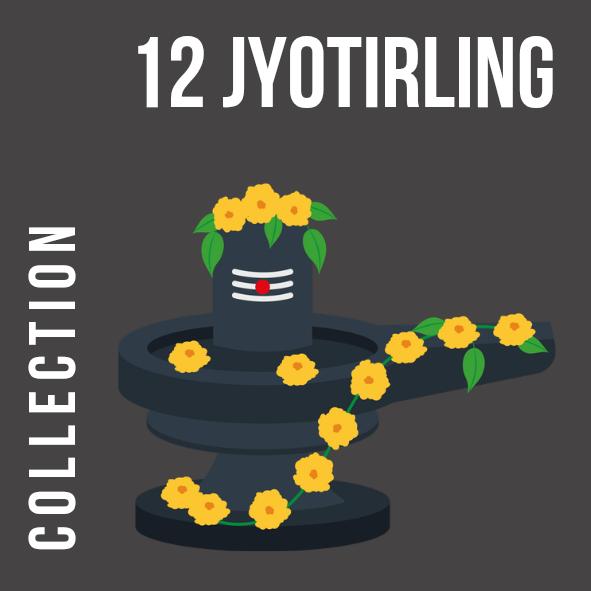
Facing Eternity: The Sacred Flames of Manikarnika Ghat
Share
A Sacred Threshold of Life and Death
Manikarnika Ghat, Varanasi’s holiest cremation ground, is where the cycle of life meets the promise of liberation in Sanatan Dharma. Day and night, pyres burn as families bid farewell to loved ones, believing death here grants moksha, freeing the soul from rebirth.
The ghat’s ancient steps lead to the Ganges, where ashes are immersed in the sacred river, completing the soul’s journey. The air hums with mantras, the scent of sandalwood mingling with the river’s breeze, while the eternal flames stand as a stark reminder of life’s impermanence. This is not just a place of farewell—it’s a profound spiritual gateway where pilgrims witness the divine transition of the soul, grappling with the mysteries of death and eternity.
A Legacy Etched in Time
Manikarnika Ghat’s significance as a site of death and liberation stretches back to ancient Hindu traditions. The Mahabharata mentions it as a place blessed by Lord Shiva for eternal salvation, marking its sacred status for millennia. Historical records indicate it has been a cremation ground since at least the 5th century CE, with its name tied to a legend where Goddess Parvati dropped her earring (manikarnika) while bathing, and Shiva declared it a place of moksha.
Over centuries, it has remained Varanasi’s primary cremation site, managed by the Dom community, who have overseen the pyres for generations. This enduring history cements the ghat’s role as a cornerstone of Varanasi’s spiritual landscape, drawing those who seek to understand the sacred cycle of life and death. [Source: Historical references in ancient texts and local traditions]
The Path to Moksha
Manikarnika Ghat holds profound spiritual significance in Sanatan Dharma, revered as a gateway to moksha—liberation from the cycle of rebirth. Devotees believe that cremation here, followed by immersion in the Ganges, ensures the soul’s release from worldly ties, a belief rooted in the ghat’s divine connection to Shiva and Parvati.
Many hold that the eternal flames of the ghat, said to have burned continuously for centuries, are lit by Shiva himself, symbolizing his role as the destroyer of illusion and the guide to transcendence. Pilgrims visit to reflect on mortality, finding solace in the chants of priests and the rhythmic flow of the Ganges, which together create a sacred space for contemplating death, liberation, and the eternal journey of the soul.
Experiencing Manikarnika Ghat with Reverence
Visiting Manikarnika Ghat is a deeply moving experience that demands sensitivity and respect, given its focus on death and mourning. Located along the Ganges, the ghat is active with cremation ceremonies around the clock, with pyres burning continuously and families performing last rites. Stand at a respectful distance to observe—photography is strictly prohibited, as this is a sacred moment for mourners.
The air carries the scent of sandalwood and the sound of mantras, creating a solemn atmosphere. Dress modestly, covering shoulders and legs, and avoid loud conversations. For a quieter perspective, hire a boat from nearby Dashashwamedh Ghat (about ₹200-300) for a riverside view. Reflect on the ghat’s teachings of impermanence, allowing the experience to deepen your understanding of life’s transience.
Connect with Varanasi’s Rituals of Transition
A visit to Manikarnika Ghat offers a profound connection to Varanasi’s spiritual traditions surrounding death and liberation. After reflecting at the ghat, explore nearby lanes to find artisans selling brassware, like small diyas, often used in memorial rituals—a reflection of the city’s heritage crafts. If your visit aligns with Pitru Paksha, a Hindu period for honoring ancestors, you’ll witness heightened rituals as families perform tarpana (offerings) by the Ganges, deepening your understanding of these practices.
Pair your visit with a stop at the nearby Kashi Vishwanath Temple, a short walk away, to continue your spiritual journey, offering prayers for the departed. Each moment at Manikarnika Ghat enriches your connection to Varanasi’s timeless traditions around mortality and the sacred pursuit of moksha.
Plan Your Visit to Manikarnika Ghat
Manikarnika Ghat is centrally located along the Ganges, a 10-minute walk from Dashashwamedh Ghat or accessible by boat for a more serene approach. There’s no entry fee, but maintain a respectful distance from cremation ceremonies, as this is a deeply personal time for families. The ghat is active 24/7, though daytime visits offer a clearer view of the rituals.
Be mindful of touts offering guided tours—politely decline if you prefer solitude. Wear comfortable shoes, as the ghat’s steps can be uneven, and keep belongings secure in crowded areas. Use the Varanasi Sacred Seekers Series cards to guide your journey, pairing this visit with nearby sacred sites to fully embrace Kashi’s spiritual depth and reflections on life and death.



